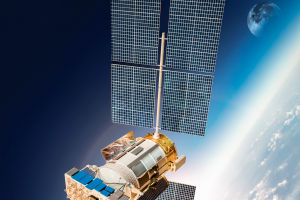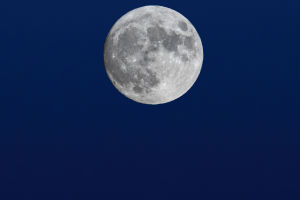The Moon, once viewed as a distant celestial body of mystery, is now at the center of an escalating competition among global powers.
Advancements in technology and renewed interest in space exploration have transformed the Moon into a strategic focus for nations aiming to secure influence, resources, and potential dominance in space.
While no one formally "owns" the Moon, the competition raises pressing questions about sovereignty, resource rights, and the future of space governance.
Under the 1967 Outer Space Treaty, signed by over 100 nations, including the United States, and China, no country can claim ownership of the Moon or any celestial body.
The treaty promotes the principle that outer space is the "province of all humankind," meant for peaceful use and free from ownership claims. Further reinforcing this stance, the 1979 Moon Agreement declared lunar resources the "common heritage of mankind."
However, the Moon Agreement was never widely accepted, as major space-faring nations like the U.S.,and China did not sign it.
Yet as nations and private corporations gear up for lunar activities, these foundational treaties face challenges.
The emergence of private companies interested in lunar mining has intensified debates on revising space laws, particularly around resource extraction rights. The absence of a universally accepted framework for lunar resources increases the risk of conflict as competition heats up.
The U.S., China, and the European Union have all launched ambitious lunar plans. In 2020, NASA's Artemis program aimed to return humans to the Moon by the mid-2020s, establish a sustainable presence, and lay groundwork for future Mars missions.
The Artemis Accords, developed alongside the program, propose principles for lunar exploration and have invited international partners. However, some countries view the accords as an effort by the U.S. to shape lunar exploration policies to its advantage.
The Moon's resources make it a desirable target in this new space race. Scientists believe that lunar regolith (surface material) contains helium-3, a rare isotope that could be valuable in future nuclear fusion.
The Moon's south pole is also rich in water ice, which can be converted into fuel, potentially transforming the Moon into a refueling station for deep-space missions.
The potential for resource extraction adds an economic dimension to the Moon race, as nations aim to secure strategic advantages in space resource management.
With global powers and companies racing to the Moon, clear governance is essential. Key questions include how lunar resources should be shared, how nations can establish bases while adhering to international agreements, and how private entities should operate legally.
To prevent conflicts, new multilateral agreements may be needed to adapt the existing framework to modern space realities.
In this era of renewed lunar exploration, the Moon represents both opportunity and responsibility. While competition among superpowers could drive technological breakthroughs, cooperative governance is crucial to keep space a domain for all humanity—not a realm dominated by the powerful.


